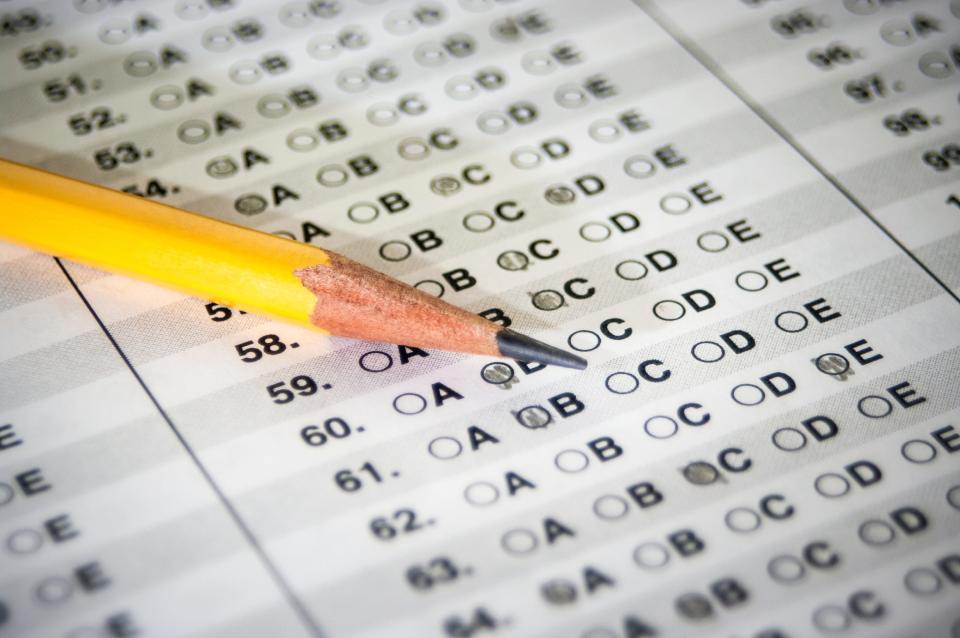Why is the SAT used to rate high school accountability? | Column
Julia Steiny blogs at juliasteiny.com.
Beginning in 2006, the federal government required all states to test students in grades three through eight, and once in high school.
In 2018, Rhode Island wisely dumped the unloved NECAP state test and switched to the Massachusetts Comprehensive Assessment System (MCAS), considered to be the best K-12 state testing program in the country.
That was a brave move. An apples-to-apples comparison between students in the two states would inevitably shine a harsh light on Rhode Island’s underperformance. Indeed, if Rhode Island were a district in Massachusetts, it would fall in their lowest 10 percentile.
But Rhode Island only uses the RICAS (our renamed MCAS) to assess grades three through eight. Logically we would use the high school MCAS to ensure consistency within the state system and comparability with Massachusetts. But no.
More: Report: Poor English skills a hallmark of RI school districts. Who scored highest, lowest?
We use the PSAT in 10th grade and the SAT in 11th.
Huh? Aren’t those college entrance exams? What do they have to do with a K-12 state testing system?
From third through eighth grade, the 2022 RICAS English scores show a decline from 36.5% proficient in the third grade to 29% in eighth. (Math rebounded for eighth graders from 16.1% in 2021 to 20.8% proficiency.)

But from eighth to 10th grade, the state system jumps the track and starts over. The PSAT can’t show us an individual student’s or school’s academic MCAS growth. It’s like following up on a funky thyroid test with a cholesterol panel.
Instead, the PSAT becomes a new baseline to measure against the 11th grade SAT, a year later.
This presents high schools with two huge problems:
First, Rhode Island urban students often enter ninth grade with abysmal educational backgrounds. Likely they read at a third- to fifth-grade level. If by grade 10 or 11, a high school ramps up individual readers by more than three grade levels, wow and high fives! But that progress is nowhere acknowledged in the accountability system. Instead, the school is deemed substandard for not teaching elementary-level readers to meet high school standards.
More: Why changes to midterms in Providence schools have some students, parents frustrated
Second, from the get-go, the purpose of the Scholastic Aptitude Test was to help colleges sort through their applicants in search of academic promise. But after accusations of biases against certain student cohorts, SATs have become optional at about 80% of colleges. Not even colleges find the SAT super useful.
Most importantly, what does a college entrance exam say about K-12 students interested in auto mechanics, the military, construction, health care support (phlebotomist) or union apprenticeships, none of which require four-year degrees?
Instead, we learn that sorted from top to bottom, SAT scores and median family income almost match. Which we already knew.
And it tells families with money they might want to invest in the bazillion-dollar test-prep industry to boost their kids’ shot at the “best” colleges. No family money, no test-prep for the other kids.
In other words, using the SAT solidifies structural inequities.
Why did we do this to ourselves?
The official answer was that about half the students take the SAT anyway, so the switch would be easy. Well, so what? And what about the other half?
The unofficial answer is that Massachusetts requires students to pass a modest MCAS benchmark to earn a diploma. That requirement poisoned Rhode Island’s adoption of a high school MCAS, even though no test is bound and tied to a graduation requirement. (Not that the requirement hasn’t done wonders for Massachusetts' workforce.) Still, guilt by association proved too toxic to build a consistent, unfragmented, useful testing program.
At the end of the day, you can call Rhode Island’s state testing “system” a reinforcement of inequity. But don’t call it accountability.
This article originally appeared on The Providence Journal: Using the SAT solidifies structural inequities in our schools.

